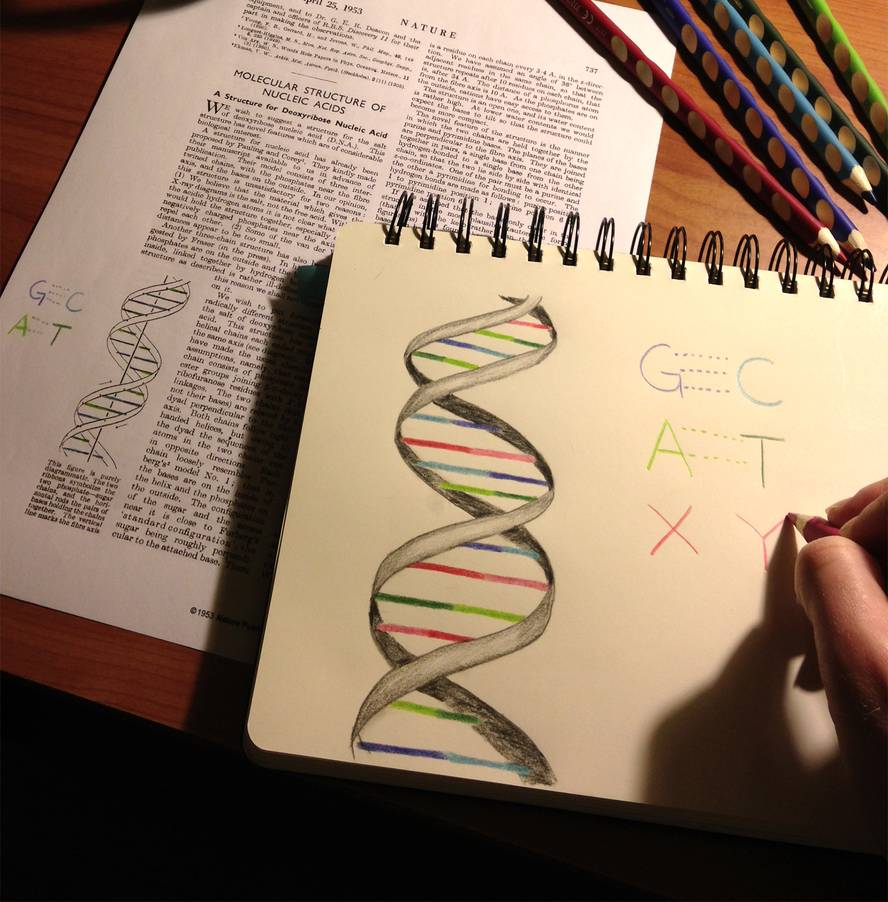Extending the genetic code create a semisynthetic life

Researchers at The Scripps Research Institute have introduced a third pair of nucleotides into a fragment of DNA, a semi-artificial part of DNA that has been reproduced normally in Escherichia coli bacteria. The results of the study, published today in the journal Nature, have been considered an important achievement of synthetic biology.
California researchers have used the non-natural pair of dNaM:d5SICS nucleotides to spread the genetic code of the E. coli bacteria. The first challenge was to introduce this pair of bases into DNA, in this case into a plasmid, into a circular piece of DNA. Subsequently, the response of the E. coli bacteria to the semi-synthetic plasmid, integrated into the E. coli bacteria, and their presence in a medium rich in pair of non-natural bases.
The result was optimal: the bacterial replication mechanism worked normally and did not rule out non-natural nucleotides from the doubling process. The bacteria used the medium's nucleotide pairs to replicate the semisynthetic plasmid as the cell grows and doubles. In short, the bacteria made their own the non-natural nucleotides, the letters that are not found in the DNA code.
In vitro experiments alone, the incorporation of non-natural nucleotides into the genetic code has been achieved, which has been a significant step forward for many researchers. According to the genetics of UPV-EHU José Antonio Rodríguez, “the fact shows that DNA molecules with a synthetic pair of bases can be replicated and kept inside a bacterium.” “The authors have been able to incorporate something completely new into a biological system that has been adjusted for millions of years. From the point of view of basic science, I think it is the greatest contribution of the result,” he added.
Research also has practical implications and can lead to new areas of application. Researchers at the University of Texas Systems and Synthetic Biology, Ross Thyer and Jared Ellefson, have written in the journal Nature “The next step will be to achieve long-term adherence.” “Once an organism accepts the pairs of non-natural bases and not only supports them, the next decisive step will be to demonstrate that [those base pairs] can be transferred to the RNA in vivo,” they add.
According to Thyer and Ellefson, this would open up countless possibilities in the field of genetic engineering, such as, for example, the on-demand coding of non-standard amino acids. Rodríguez is also “anxious” to know if the bacteria could use these non-natural bases in the process of gene expression, transcription and translation, because “if so, the genetic code would be greatly extended and with this extended code, in principle, it would be possible to create synthetic proteins formed by artificial amino acids with new characteristics and capacities.” In fact, moving from a four-base code to a six code would allow using 172 proteins instead of 20 amino acids.
Thyer and Ellefson go further: “Why restrict DNA with six letters?” they ask, “if the integration technique of the dNaM:d5SICS pair in E. coli serves also for other base pairs, the DNA code could extend much more than three base pairs.” But this leads the two researchers to basic questions: if the possibilities of an extended code are so great, why is life based only on two pairs of bases?Will semi-synthetic organisms with the capacity to store more information have greater capacities or the cost of such a code be unsustainable?
José Antonio Rodríguez, of the UPV-EHU, considers that the economic implications of possible applications of an extensive genetic code must also be taken into account. “Discoveries based on natural DNA are difficult to patent,” he warns, “while DNA molecules with synthetic base pairs would be completely artificial and therefore easier to patent.”
Complement (by hemeroteca):
Artificial life and its consequences. Álvaro Moreno, Department of Logic and Philosophy of Science. Biology Philosophy Group, IAS Research. UPV/EHU





